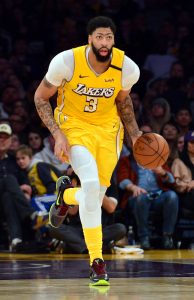There are many NBA players technically on maximum salary contracts, but most of those players aren’t earning identical salaries this season, making the league’s “maximum salary” something of a misnomer. While each NBA player has a maximum salary that he can earn in a given season, that number varies from player to player, with a handful of factors playing a part in determining the exact figure.
The primary factor in determining a player’s maximum salary is his years of service. If a player has been in the NBA for no more than six years, he can earn up to 25% of the salary cap in the first year of his deal. Players with seven to nine years of experience can earn up to 30%, while veterans with 10 or more years in the NBA are eligible for up to 35% of the cap. In 2019/20, the salary cap is $109,140,000, meaning the maximum salaries are as follows:
| Years in NBA | Salary |
|---|---|
| 0-6 | $27,285,000 |
| 7-9 | $32,742,000 |
| 10+ | $38,199,000 |
 The figures above help explain why nine-year veteran Kemba Walker, who signed a maximum salary contract as part of a sign-and-trade to the Celtics last July, is earning a salary of $32,742,000 this season. But they don’t explain why Lakers star Anthony Davis, who is also in that 7-9 year window and is on a max contract of his own, is earning just $27,093,018.
The figures above help explain why nine-year veteran Kemba Walker, who signed a maximum salary contract as part of a sign-and-trade to the Celtics last July, is earning a salary of $32,742,000 this season. But they don’t explain why Lakers star Anthony Davis, who is also in that 7-9 year window and is on a max contract of his own, is earning just $27,093,018.
The reason Davis’ maximum salary is a few million shy of Walker’s is that those league-wide maximum salary figures only apply to the first year of a multiyear contract. When a player signs a maximum contract, he can receive annual raises of up to either 8% or 5%, depending on whether he signs with his previous team or a new team. So by the third, fourth, or fifth year of his contract, he could be earning significantly more or less than the updated max for that season.
Davis signed his maximum salary contract extension in 2015 and it went into effect in 2016/17, when he had fewer than six years of NBA experience. Although he has received annual 8% raises since then, those raises haven’t been enough to keep up with the annual cap growth and with his move into the 7-9 year window. As a result, he’s earning about $5.65MM less than his actual max in 2019/20, despite being on a “max contract.”
Davis will get to start over on a new max deal in ’20/21, assuming he turns down his player option this offseason. If he wants to maximize his earnings going forward, he’ll likely opt for a shorter-term deal that gives him the opportunity to sign a new contract in 2022 when he gains 10 years of NBA experience and qualifies for a starting salary of up to 35% of the cap.
Here are a couple more ways a player’s usual maximum salary can fluctuate:
- A free agent’s maximum salary is always at least 105% of his previous salary. For example, Warriors star Stephen Curry is earning $40,231,758 this season. He’s under contract for two more years after 2019/20, but if he were eligible for free agency this offseason, he’d be able to sign for a starting salary of up to $42,243,346 (105% of this year’s salary), even if that figure exceeds 35% of the 2020/21 cap.
- In certain situations, players eligible for new contracts can earn the maximum salary for the level above the one they’d typically fall into. For instance, a player receiving a designated rookie extension can earn up to 30% of the cap instead of 25% if he meets certain criteria. A veteran can become eligible to earn up to 35% of the cap instead of 30% if he meets the same criteria, which are related to MVP, Defensive Player of the Year, or All-NBA honors.
A player who signs a maximum salary contract can receive a trade kicker as part of his deal, but he can’t cash in on that bonus for any amount beyond his maximum salary in a given league year. For instance, Karl-Anthony Towns‘ max salary contract with the Timberwolves features a 5% trade kicker, but if he had been traded this season, he wouldn’t have been eligible to receive that bonus, since he’s already earning his maximum salary of $27,285,000.
Similarly, a maximum salary player whose team finishes the season below the minimum salary floor isn’t eligible to receive a share when the team distributes that money to its players, since his max salary for that year can’t be exceeded.
Note: This is a Hoops Rumors Glossary entry. Our glossary posts will explain specific rules relating to trades, free agency, or other aspects of the NBA’s Collective Bargaining Agreement. Larry Coon’s Salary Cap FAQ was used in the creation of this post.
Earlier versions of this post were previously published by Luke Adams and Chuck Myron. Photo courtesy of USA Today Sports Images.